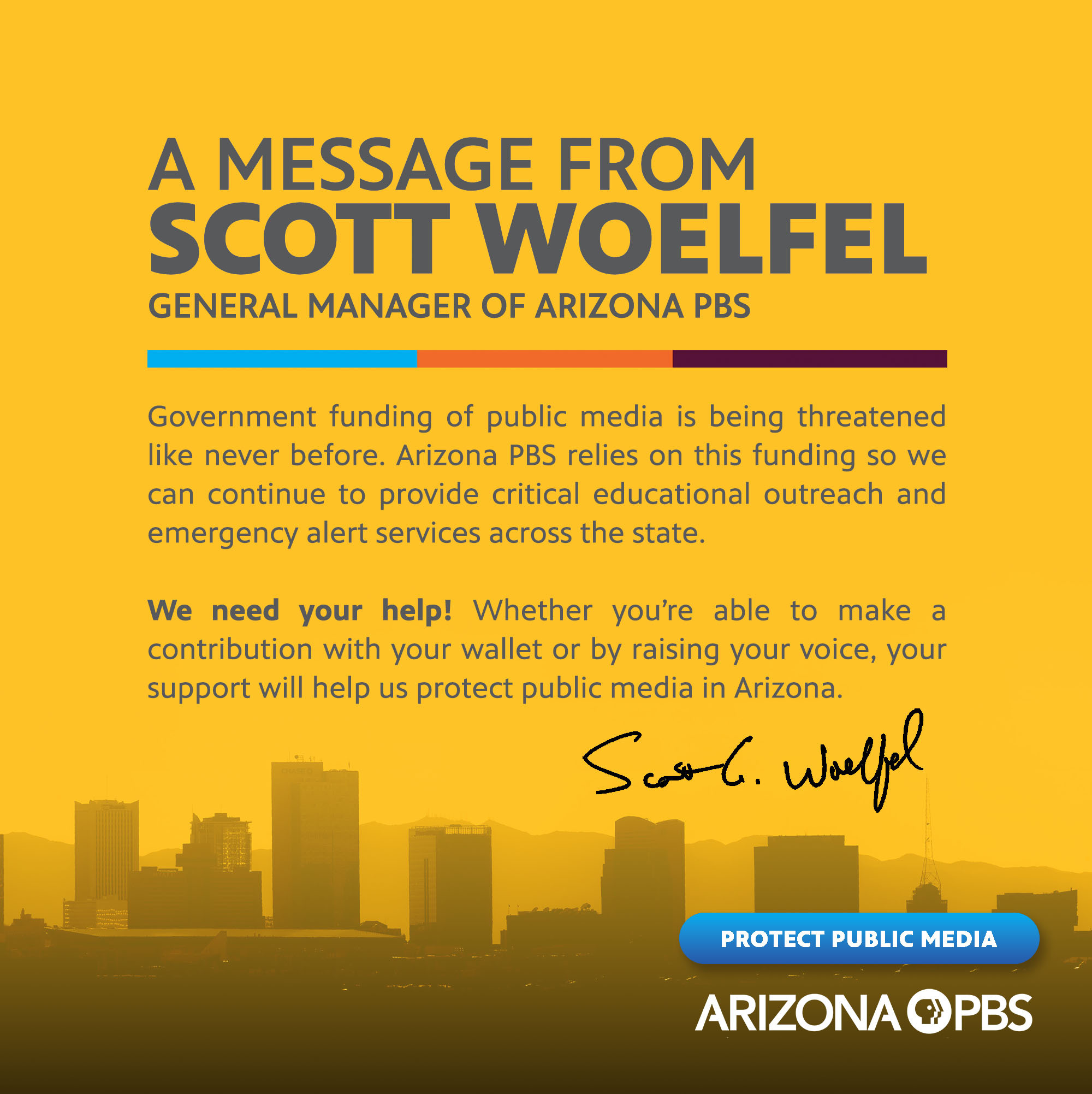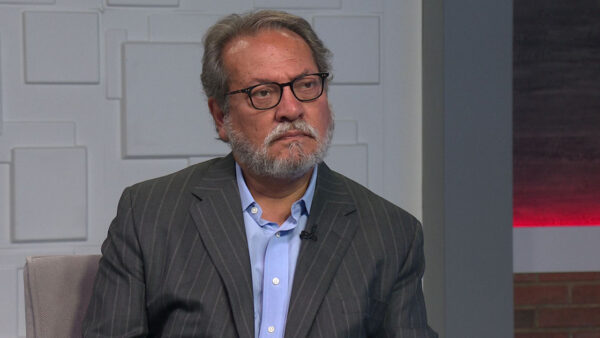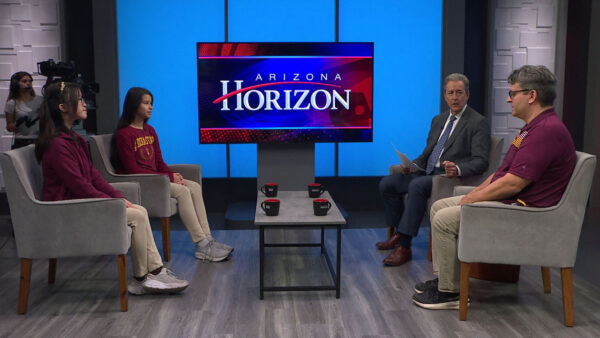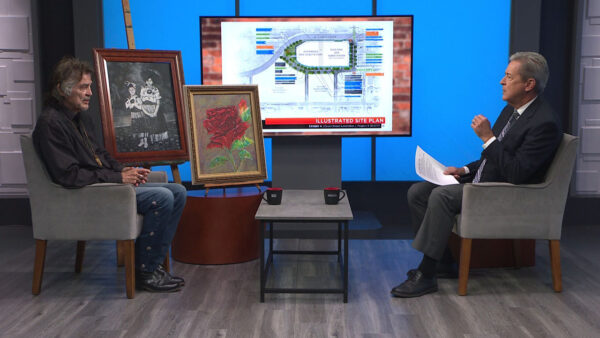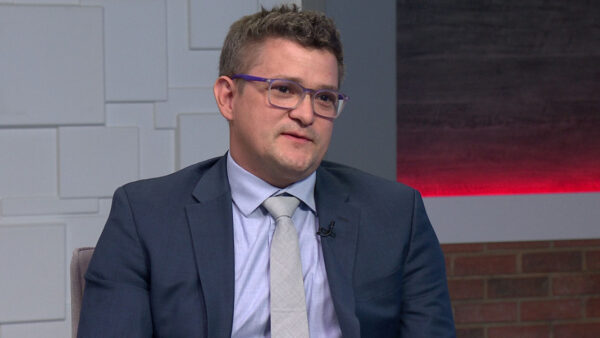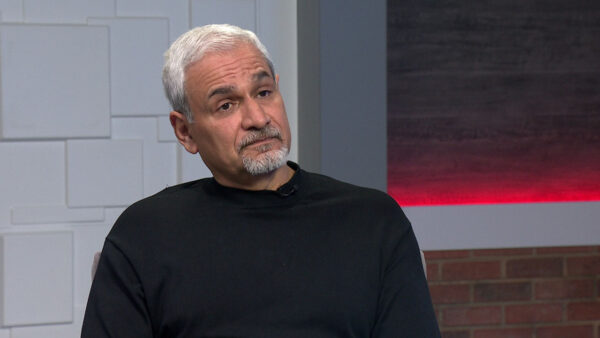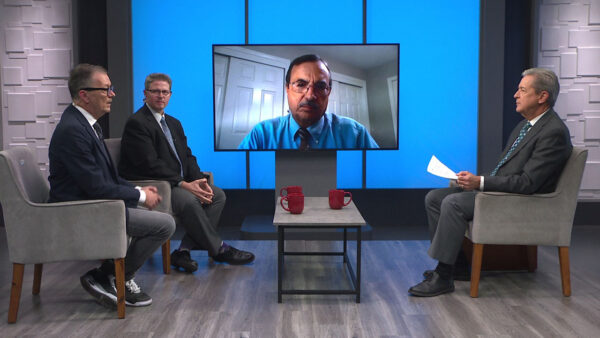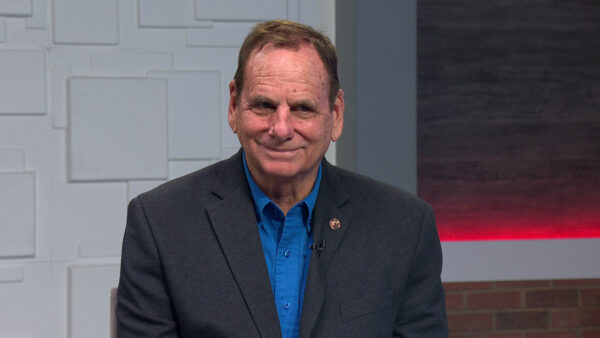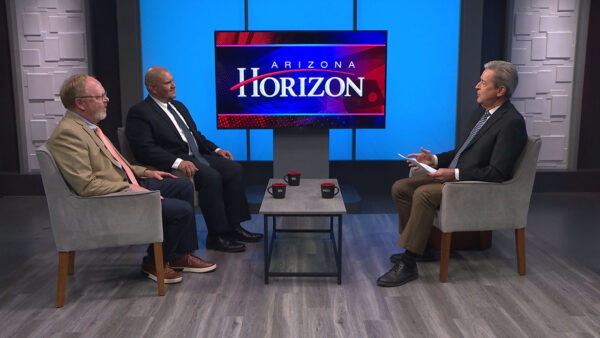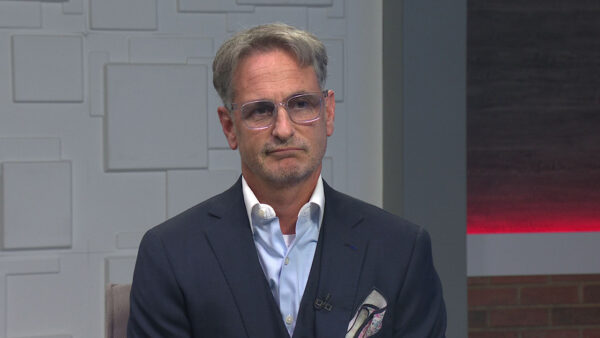Researchers at Arizona State University’s Ira A. Fulton Schools of Engineering have combined two types of solar technologies that could make solar panels cheaper and more accessible. Traditional solar panels made with silicon are expensive but more efficient than cheaper, thin film solar cells, which are made with cadmium telluride. ASU researchers Zachary Holman and Yong-Hang Zhang will tell us more about their work leading to better solar panels.
Ted Simons: Tonight's edition of Arizona technology and innovation looks at how researchers at ASU's Ira A. Fulton schools of engineering have come up with a way to make solar panels cheaper and more accessible. We welcome ASU researchers Yong-hong Zang and Zachary Holman. Welcome to "Arizona Horizon." Good to have you here.
Yong-Hang Zhang: Thank you very much for inviting us.
Ted Simons: You betcha. Solar panels cheaper and more accessible. It sounds like you combined a couple of different ideas here. Talk to us about it.
Yong-Hang Zhang: Yes. Actually, the most popular solar cells in this state are silicon solar cells and another with a lower efficiency but actually lower manufacturing cost. So ideally if you combine these two, you can make an even higher efficiency and possibly even lower cost.
Ted Simons: So basically, you've got silicon which works really well but it's expensive and you've got the thin film which may not work quite as well but is cheap. The two twains are meeting?
Zachary Holman: That's the idea. So typically in the past, the research group at ASU has worked on thin-film solar cells and my group has worked on silicon solar cells and this is a marriage of two different research groups to produce this new result. We have very high-efficiency solar cell with that cheap technology and while it's not cheap on a mass manufactured scale yet it has the potential to be.
Ted Simons: What got you started with this idea that maybe these two ideas should be mixed a little closer together?
Yong-Hang Zhang: Yes. This is a very interesting question. Actually, it goes back quite a long way. My group started, actually, science foundation Arizona 80 years ago, that's why I want to thank them and thank the state for putting money into the science foundation Arizona. We started there, it takes a long time. So this particular project started two years ago. And we started to improve the material quality, etc., until one day we got to a point that we needed help from my colleague, zach. He's the expert on silicon solar cells. Our students talk and boom, this idea started.
Zachary Holman: We deserve relatively little credit in taking the idea of the last bit because it was his students and my postdoc who came up with the last twist that we needed in order to turn this into reality.
Ted Simons: When they showed you, what did you think at first? Did you say -- what were your thoughts?
Zachary Holman: We're scientists. We're skeptical of course, especially because normally, in the lab you do something for the first time, it fails miserably. The second time usually as well and in this first case it not only worked first time but worked the 100th time. So I think we were both surprised and excited and we're presently gunning for a world record.
Ted Simons: I want to get to that. But higher voltage, better efficiency, that's the bottom line here?
Yong-Hang Zhang: That's correct.
Ted Simons: And how will this impact the solar industry?
Yong-Hang Zhang: Yes. The higher voltage and the higher efficiency basically will lower the overall cost, you've got the same area of solar panels but suddenly you can produce say 50% more electricity. Of course, the price of electricity will come down.
Ted Simons: And first solar, isn't first solar, they're big with thin film, correct?
Yong-Hang Zhang: Exactly, first solar is actually the largest solar cell manufacturer in the world. $5 billion marketing cap.
Ted Simons: But it sounds like this is something that first solar would say I'm interested?
Zachary Holman: And first solar does seem to be interested and they're in a lucky position where they don't have any other competition in the thin film solar market. They are the player and so they don't have to compete with other people and so they're not too worried about us shopping the technology around their competitors which puts them in a strong position but they're very much interested.
Ted Simons: Would this fundamentally change the solar industry? It would be a gradual kind of a change? How different is what you've designed?
Zachary Holman: This is going to look like a solar panel, it's going to behave like a solar panel, it's just going to be a better solar panel. Efficiency allows you to reduce costs. A lot of people don't realize it but solar module costs have fallen so much, a factor of three, now if you were to install solar modules on your roof, only one fifth of the cost you pay would be the module. The four would be the permitting and the technician. If we can make that module more efficient, it makes the whole system cheaper.
Ted Simons: You're getting the silicon expense down and the thin film up a little bit but not too much?
Yong-Hang Zhang: Yes, but eventually, we want to combine these two so we have hopefully get even like a 50% increase in efficiency, that means the labor costs, permitting cost will reduce. Right now solar electricity is still more expensive than like a coal fired plant or even like a nuclear power plant. Hopefully, we can reduce the cost further and become really competitive. There's no need for government subsidies.
Ted Simons: You mentioned you're going for a record here. I noticed that you reached an open circuit voltage of 1.1 volts. I have no idea what that means. Is that a good thing?
Zachary Holman: You know what a nine-volt battery is.
Ted Simons: I throw them around all the time.
Zachary Holman: You're familiar with voltage. The previous highest voltage for this type of solar cell was 0.9 volts for many, many years, and then a few months before our record came out, another group from Colorado pushed that up to one volt. So that's a 10% increase relatively, that's quite large and we just afterwards pushed that up to 1.1-volt so that may not sound like a huge number to you, it's not a doubling or something like this but this is a substantial increase for technology that's already deployed at scale to power 2.5 million homes. So if you can take that same technology that's already out in the world and push all of the efficiencies up by 20% that's huge.
Ted Simons: Can it improve even more?
Yong-Hang Zhang: Theoretically we can further improve it a little bit more but we already are reaching the theoretical limit. That's why people got excited, this is the best you can really do, as long as you can apply this to real applications and really exciting. That's why first solar, they are walking with us, working very closely, we transfer all the knowledge to them so we are very pleased.
Ted Simons: I was going to say there has to be a limit to how much thin film solar can improve. There's got to be a stopping point, correct? Or can you just keep improving and improving?
Yong-Hang Zhang: This is a very good question. You look at the computer chips. People always say I can improve the speed right but eventually there is a limit but we're still quite far away from that limit for solar cell efficiency.
Ted Simons: And with that in mind what's next in your research?
Zachary Holman: We have something new that's going to be started. So far, we've been making a thin film solar cell with a bit of silicon in it that's a little bit better. We're going to be stacking two different solar cells on top of each other, the thin film one will absorb the blue invisible light, we think we can get over 30% efficiency.
Ted Simons: My goodness, good luck with that and thank you, both for being here, congratulations on your success.
Zachary Holman: Thank you.
Ted Simons: Friday on "Arizona Horizon," it's the Journalists' Roundtable. An Arizona lawmaker is indicted on charges of welfare fraud.
Ted Simons: And what impact will today's Supreme Court decision on deferred deportation have on upcoming elections? That's on the next Journalists' Roundtable. That's it for now, by the way if you want to watch tonight's program again we're on the Internet there at azpbs.org/horizon. You can see past shows, you can see future shows, you can see all sorts of things, azpbs.org/horizon. That is it for now. I'm Ted Simons, thank you so much for joining us. You have a great evening.
Video: "Arizona Horizon" is made possible by contributions from the Friends of Arizona PBS, members of your PBS station. Thank you.
Zachary Holman: ASU Researcher,Yong-Hang Zhang: ASU Researcher
